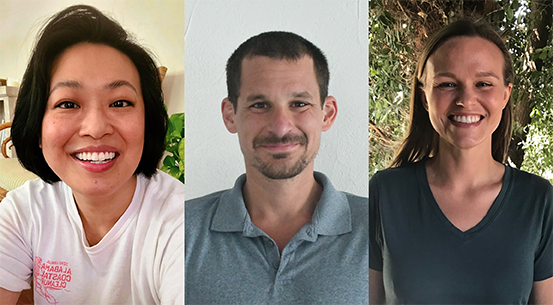
The effects of offshore wind development and severe weather on Gulf of Mexico fisheries are two areas of focus for new synthesis research supported by the NOAA RESTORE Science Program and the National Center for Ecological Analysis and Synthesis (NCEAS).
Two projects, which will each receive two years of funding, were selected following a rigorous and competitive process that included a review by a panel of outside experts. These are the first projects to be funded through the Gulf Ecosystem Initiative, a $3.5 million partnership to fund synthesis science and postdoctoral research for the Gulf of Mexico.
“These awards are an exciting investment in synthesis science that supports the sustainability of the Gulf of Mexico ecosystem,” said Nicole LeBoeuf, director of NOAA’s National Ocean Service. “Through these projects, we hope to gain a better understanding of the factors that influence the health of natural resources in the region, especially in the context of a rapidly changing climate.”
One working group will be led by Holden Harris from NOAA’s Southeast Fisheries Science Center. This group will focus on facilitating strategic, science-based offshore wind energy infrastructure planning by evaluating its potential impacts on fish and fisheries. The project team will synthesize data related to the potential artificial reef and exclusion zone effects from offshore wind energy.
A second working group led by Chris Biggs from the University of Texas at Austin will evaluate how severe weather – such as hurricanes, floods, droughts, and freezes – affects the Mission-Aransas and Galveston Bay estuaries in Texas. The project team will use statistical models to analyze long-term datasets of the hydrology, water quality and chemistry, primary production, zooplankton, benthic fauna, and nekton from both Texas estuaries to inform the needs of fisheries and resource managers in response to severe weather.

Three postdoctoral researchers will also join the 2023 Gulf Ecosystem Initiative cohort. Mai Fung, a Ph.D. candidate from the University of South Alabama; Shayna Sura, a postdoctoral marine scholar from the Dauphin Island Sea Lab; and Raymond Czaja, a Ph.D. candidate from Stony Brook University. Each researcher will pursue an independent synthesis project while they work alongside one or more of the funded working groups.
“NCEAS has long been a supportive and inclusive place for postdocs to learn, accelerate their research, and grow their careers,” said Ben Halpern, executive director of NCEAS. “The cohort model of having diverse people with different expertises and experiences is really powerful, and we’re excited to bring that model to our collaboration with NOAA.”
Over the next five years, the Gulf Ecosystem Initiative will support 10 scientific working groups and up to eight postdoctoral fellows. The next call for proposals for the Gulf Ecosystem Initiative will be announced later this year.
This funding is provided through the RESTORE Act, also known as the Resources and Ecosystems Sustainability, Tourist Opportunities, and Revived Economies of the Gulf Coast States Act, that authorized NOAA to establish and administer a Gulf Coast Ecosystem Restoration Science, Observation, Monitoring, and Technology Program.
The Science Program is funded by 2.5% of the Gulf Coast Restoration Trust Fund, which was established by the RESTORE Act. The Trust comprises 80% of the Clean Water Act civil penalties recovered from parties responsible for the Deepwater Horizon oil spill. Collectively, the fines will result in at least $133 million in funding for the NOAA RESTORE Science Program.
The mission of the NOAA RESTORE Science Program is to increase understanding of the Gulf of Mexico ecosystem, including its fisheries, and to support its restoration and sustainability through research, observation, monitoring, and technology development.
NCEAS, in downtown Santa Barbara, is a research affiliate of University of California Santa Barbara. For over 25 years, NCEAS has supported hundreds of scientific synthesis working groups to transform existing data into knowledge that informs environmental policy and management.

 Official websites use.gov
A .gov website belongs to an official government organization in the United States.
Official websites use.gov
A .gov website belongs to an official government organization in the United States.
 Secure .gov websites use HTTPS
A lock or https:// means you’ve safely connected to the .gov website. Share sensitive information only on official, secure websites.
Secure .gov websites use HTTPS
A lock or https:// means you’ve safely connected to the .gov website. Share sensitive information only on official, secure websites.